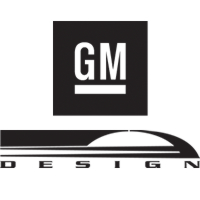The 2019 Volkswagen Jetta, revealed last month at the North American International Auto Show in Detroit, marks an important step in the history of Volkswagen’s best-selling model. The seventh-generation car moves to the award-winning MQB platform, which allowed the design team to redefine the Jetta with more dynamic proportions, a more modern design, and improved interior space compared to the previous generation.
“The Jetta is such an iconic product,” says Klaus Bischoff, Head of Volkswagen Design. “We wanted to come up with something totally new. It was essential to give this product more prestige, more sportiness, a totally new proportion.”
Working with the flexible MQB platform allowed the designers to reshape the body, creating a longer wheelbase, wider track, and bigger wheels. While the larger proportions allow more interior space, a shorter front overhang and fast-sloping rear roofline translate into a coupe-like profile. Dynamic lines and taut surfaces combine with the new silhouette to give Jetta a look that’s at once elegant, yet athletic.
The front end design, with its emphasis of horizontal lines, at once identifies the new Jetta as a Volkswagen. Specific to the model is the distinctive unit formed by the radiator grille and the standard LED headlights. The trapezoidal grille is composed of four chrome bars, two of which flow into the headlight housings where the LEDs pick up the lines and connect them for a wrap-around effect.
“It was essential to give Jetta a strong face,” says Bischoff. “The combination of headlight and grille into one shape gives the front a very wide look, but the grille is also very high and deeply carved—it stands proud. It’s totally new for Jetta to have such a powerful expression.”
The car’s silhouette is marked by its taut surfaces and a long, extended side window. The coupe-like impression of the Jetta is reinforced by an offset roofline known as a ‘phase’—a narrow strip that runs parallel to the actual roofline and into the C-pillar—which visually reduces the car’s height. Beneath the shoulder, on the level of the door handles, there is a precisely carved character line that runs as an undercut. Its shadow surface tapers toward the rear, slightly arrow-shaped. The wheel arches and side sills also form a powerful unit with their muscular design. The side sills here are marked by an integrated light line, which continues into the rear body.
“What’s going to call attention from the first glance is the sculpted body side and the strong shoulder line that runs from the taillight to the driver door,” says Marco Pavone, Head of Exterior Design at Volkswagen. “The surface treatment is a lot more masculine and sporty on this car.”
The style of the rear section is defined by the arch-shaped trailing edge that extends into the shoulder section and forms the aerodynamic termination of the trunk lid. The spoiler, which is integrated into the body design, emphasizes the sedan’s impressive width. This width is also highlighted by the sharp lines of the concise LED taillight clusters. Another feature of the design is its low drag coefficient of just 0.27, depending on equipment.
Inside, Jetta’s cockpit architecture is new, with the instruments and infotainment system arranged along a driver-oriented visual and control axis. Trapezoidal design elements from the exterior are repeated in the cabin for a touch of sportiness, while premium materials bring a decidedly upscale feel.
Bischoff notes the interior design started with form following function. “HMI design is about simplicity—you should understand everything from the first gaze,” he says. “A cockpit layout needs to be perfect in ergonomics, everything in one line, everything self-explanatory.”
The upper section of Jetta’s dash panel integrates instrumentation, including the available Volkswagen Digital Cockpit, and infotainment into one trapezoidal unit. Clustering all-key functional units helps focus the driver’s attention in one area, while also creating a clean design aesthetic. Only the climate control interface is located as a separate module on the center console.
The lower part of the instrument panel has a strictly horizontal design with a fine decorative trim strip that runs beneath the cockpit, across the entire instrument panel and into the doors. Just below this sits the main line of the available 10-color ambient lighting system. Coupled with the driver profile selection feature, in Normal profile, the light is white, in the Sport profile red, and in the Eco profile blue. The driver can set any of the ten colors for the Individual mode.
























